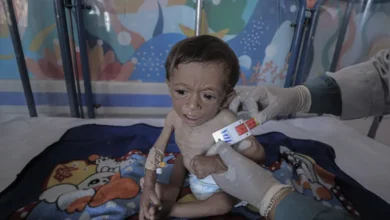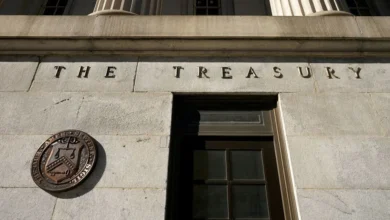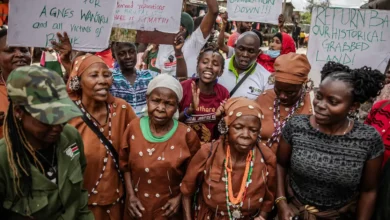Is a global debt bomb about to explode?

The United States Treasury secretary, Janet Yellen, World Bank chief Ajay Banga and a host of world leaders looked on as Hakainde Hichilema, the president of Zambia, took the microphone. The occasion: a Paris summit hosted by French President Emmanuel Macron on June 24 to brainstorm solutions to a debt crisis sweeping the developing world.
It was a moment of respite for Zambia, which in 2020 had become the first African country to default on its sovereign debt following the devastation of COVID-19. In Paris, its biggest lenders including China and Western nations agreed to restructure $6.3bn of Zambia’s loans under an initiative driven by the G20.Yet, after thanking France, China, South Africa – which played a key role in the negotiations – and others, Hichilema struck a note of caution. It had taken more than two years of talks for the approval of Zambia’s debt restructuring plan, he pointed out. “For the countries that are coming after us, there is a need to expedite the processes,” Hichilema said. “Every day we don’t deliver these things that are within our control, we are basically increasing the costs and the damage gets compounded.”
The queue of countries seeking debt restructuring like Zambia is only growing.
The majority of low-income developing countries are today either already in or near debt distress. Meanwhile, the world’s two large economies, the US and China, are expected to see a jump in their public debt at higher levels than before the pandemic.
Ghana and Sri Lanka defaulted on their external debt in 2022, two years after Zambia did. Pakistan and Egypt are on the verge of a default. On June 30, Pakistan secured a tentative $3bn funding deal with the International Monetary Fund (IMF), promising it potential, short-term relief.
Global public debt levels remain high – at 92 percent of gross domestic product (GDP) at the end of 2022 – despite falling from the record levels seen during the COVID-19 pandemic, when they touched 100 percent of GDP at the end of 2020.
So, is the debt crisis a global contagion? Are low-income countries at a much higher risk than the others? Would countries be forced to accept tough conditions for bailouts? And what can richer countries and financial institutions like the IMF and World Bank do to ease the pain?
The short answer: The growing debt of poor countries is alarming but there is no evidence of a contagion that could trigger a global crisis. Yet. However, economists and debt-management experts say richer countries need to act fast to bring relatively new creditors, including China and the private sector, on board for debt restructuring deals for a quicker economic recovery and to avoid a repeat of the 1980s debt crisis that hobbled dozens of less-developed nations for years.The collapse
The COVID-19 pandemic crushed economic activity globally, leading to revenue shortages and increased spending by governments to shield the economy from the adverse effects of a slowdown and layoffs. As a result, global public debt shot up the highest in a year from 84 percent of GDP at the end of 2019 to 100 percent a year later.Poorer nations, which were hit the worst by the public health crisis, had to depend more on external loans to survive.
About 60 per cent of low-income developing countries are now either high risk or in debt distress and have either had, or are about to start, a debt restructuring process. This figure was 40 percent before the pandemic.
The debt situation was compounded by Russia’s full-scale invasion of Ukraine in February 2022, which led to an increase in global commodity and food prices.
“Now, the resurgence of inflation means major central banks have increased interest rates, making the cost of debt servicing costly and this is a problem for both low-income and middle-income countries,” Ugo Panizza, a professor of economics at the Geneva-based Graduate Institute of International and Development Studies, told Al Jazeera.
In all, 52 developing countries – home to half the world’s population living in extreme poverty – are facing severe debt problems and high borrowing costs.
As often happens amid crises, the dollar’s value strengthened over 2022 compared with most emerging and advanced-economy currencies as investors’ demand grew for the US currency, viewed as a safe asset. This, in turn, has made it even costlier for lower- and middle-income countries to meet their debt obligations as most cross-border loans and international debt is denominated in US dollars.
“A lot of global liquidity coming up for refinancing is in dollars and if your currency deteriorates, as it happened in the case of Ghana, where the cedi collapsed, your ability to meet the debt payments is hugely damaging,” Judith Tyson, a research fellow who specialised in private investment and financial development at the Overseas Development Institute (ODI), told Al Jazeera.
“There’s probably going to be some more years of high levels of dollar and interest rates and that’s a significant problem. ”
Ghana’s currency, the cedi, lost more than 50 percent of its value between January and October 2022, causing Ghana’s debt burden to rise by $6bn. Ghana defaulted on most external debt in December and now aims to reduce its external debt repayments of $20bn by half over the next three years to secure a $3bn loan deal from the IMF as a part of its debt restructuring.
Yet, the struggles of Ghana, Sri Lanka, Zambia and dozens of other nations teetering on the edge of default are not unprecedented.










